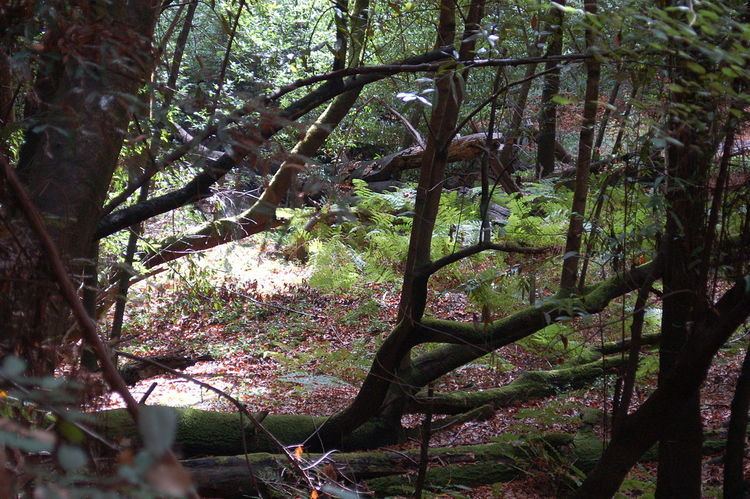 | ||
California mixed evergreen forest is an ecoregion of the Temperate broadleaf and mixed forests biome. It is found in the mountain ranges of California and into southwestern Oregon.
Contents
- Klamath Siskiyou mixed evergreen forest
- California Coast Ranges mixed evergreen forest
- Southern Coast Transverse and Peninsular Ranges mixed evergreen forest
- References
The Mixed evergreen forest ecoregion is native to the Northern and Southern California Coast Ranges and Sierra Nevada of central and northern California; the Transverse Ranges and Peninsular Ranges of southern California; and the southwestern Oregon Coast Ranges.
California mixed evergreen forests occur in ecoregions of the California Floristic Province, including in areas of the California chaparral and woodlands and its sub-ecoregions, Klamath-Siskiyou Mountains forests, Northern California coastal forests, and Sierra Nevada lower montane forest. The forests of each ecoregion have a somewhat different plant community composition.
Klamath-Siskiyou mixed evergreen forest
The mixed evergreen forests of the Klamath Mountains-Siskiyou Mountains occur above 300 meters (1000 ft) elevation, and are of four main types. Douglas-fir forests are found on gentle slopes, north-facing slopes, ridges with deep soil, and river terraces with deep sediments, usually underlain with sedimentary rocks. Coast Douglas-fir (Pseudotsuga menziesii ssp. menziesii) is the predominant tree, occupying up to 70% of the forest cover. Broadleaf evergreen trees are relatively few. Tree species of secondary importance are:
On granite soils, a similar species composition predominates, but with more broadleaf evergreens, chiefly:
On steep, well drained slopes, canyon live oak is the dominant species, with coast Douglas-fir in a minor role.
On serpentine soils, mixed evergreen forests are made up of:
moister areasCalifornia Coast Ranges mixed evergreen forest
Mixed evergreen forests in the California Coast Ranges vary in species related to coastal (Outer Ranges) or inland (Inner Ranges) climate influences. Mountains in the San Francisco Bay Area frequently support mixed evergreen forests. Moister forest habitat the more lush the understory.
Those closer to the coast receiving adequate fog moisture and high rainfall generally will have:Common wildlife include Steller's jay, chestnut-backed chickadee, western gray squirrel, raccoon and many others. These forests are more diverse in animal life than those having only conifers. The dominance of broadleaf trees offers more food sources. These forests offer a feel of broadleaf deciduous forests though evergreen trees dominate.
Southern Coast, Transverse, and Peninsular Ranges mixed evergreen forest
Also called southern mixed evergreen forests, the mixed evergreen forests of the southern California Coast Ranges, the Transverse Ranges, and the northern Peninsular Ranges, are restricted to cooler north-facing slopes at higher elevations.
Predominant tree species include: